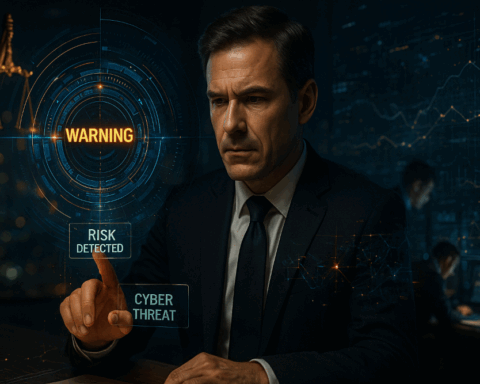The transport, mobility, and infrastructure sector constitutes a complex and indispensable network that underpins the foundations of modern society and economy. It encompasses not only physical structures such as roads, railways, ports, and airports, but also the organizational and technological systems that ensure people, goods, and services are moved efficiently and safely from one location to another. The transport network functions as a vital artery for both urban and rural areas, having a direct impact on economic productivity, social inclusion, access to education, healthcare, and employment. The interconnection of infrastructure, logistics, and mobility means that stagnation or malfunction in one area often has far-reaching consequences for other parts of the network. This necessitates a multidimensional approach in which technical, legal, economic, and ecological considerations are simultaneously taken into account, making the sector both challenging and extraordinarily dynamic.
At the same time, the sector faces immense pressure from globalization, urbanization, climate change, and technological transformation. The growth of urban populations places existing infrastructure under strain, resulting in congestion, pollution, and wear on transport networks. Emerging technologies such as autonomous vehicles, smart traffic systems, and electric and hydrogen-powered vehicles fundamentally alter the organization and operation of transport, while simultaneously raising complex questions about regulation, safety, and societal acceptance. The urgency to develop sustainable, efficient, and future-proof solutions is greater than ever, requiring an integrated strategy that promotes economic vitality while minimizing ecological and social impacts. Policymakers, engineers, companies, and logistics experts are compelled to collaborate innovatively to design systems capable of accommodating current demand patterns while remaining flexible and resilient to future challenges.
Road Transport
Road transport represents the most direct and visible form of transportation and constitutes the backbone of regional and national mobility. The network of highways, primary roads, secondary roads, and urban streets is essential for the functioning of both urban and rural areas. For passenger transport, it provides an indispensable means for daily commutes, while simultaneously enabling the distribution of goods between production centers, logistics hubs, and end users. Road transport integrates diverse technologies, from conventional vehicles to modern connected-car solutions, offering a flexibility unmatched by other transport modalities. The reliability and accessibility of the road network serve as direct indicators of economic vitality and social mobility, and any stagnation or disruption in this infrastructure can have extensive repercussions for both businesses and citizens.
The logistics dimension of road transport is particularly critical. In an era of exponential e-commerce growth, the transport of goods from warehouses to end consumers, known as “last-mile delivery,” forms a core component of the supply chain. These activities demand precise coordination of vehicles, drivers, route planning, and real-time tracking technologies. The efficiency of these processes determines not only customer satisfaction but also has direct economic implications for companies and cities. The pressure to deliver faster, more reliably, and more cost-effectively drives continuous innovation in vehicle technology, route optimization, and operational management systems.
Sustainability in road transport is an increasingly urgent concern. Dependence on fossil fuels and the resulting emissions of CO2, nitrogen oxides, and particulate matter pose serious environmental and public health challenges. Innovative solutions such as electric vehicles, hybrid technologies, and hydrogen-powered trucks offer ways to mitigate these impacts, but they also introduce infrastructure demands such as charging networks and hydrogen stations. At the same time, intelligent transport systems and autonomous vehicles have the potential to make traffic flows more efficient, reduce congestion, and significantly enhance road safety. Transitioning to a sustainable and intelligent road transport system requires substantial investment and a comprehensive reassessment of existing logistical structures and regulations.
Rail Transport
Railways constitute one of the most energy-efficient and environmentally friendly forms of transport for both passengers and goods. The railway network provides unparalleled capacity to move large volumes over long distances while maintaining a significantly lower ecological footprint than road or air transport. Historically, railways have fostered economic development and regional integration by connecting cities and industrial hubs and facilitating trade. Modern rail networks combine traditional infrastructure with innovative technologies such as high-speed trains, advanced signaling systems, and digital logistics platforms, significantly increasing capacity, speed, and reliability.
Freight rail transport is particularly important for heavy and bulk goods, including ores, chemicals, oil, and agricultural products. The use of trains offers economies of scale and enhances the predictability and safety of deliveries while maintaining a lower dependency on fuels and a smaller environmental impact compared to road transport. Moreover, rail forms a crucial link in multimodal transport chains, enabling goods to be efficiently transferred between ships, trucks, and domestic trains. Integrating railways with other transport modalities is essential to creating a coherent, flexible, and economically viable logistics system.
Investment in railway infrastructure, however, is capital-intensive and requires long-term planning and political commitment. Modernizing existing lines, building new routes, and implementing digital management systems demand substantial financial resources and collaboration between public and private sectors. Simultaneously, the shift toward sustainable energy forms, such as electric locomotives and renewable energy sources, presents opportunities to further reduce the ecological impact of rail transport. For a future-proof transport network, systematic integration of infrastructure, technology, and environmental strategies is indispensable.
Aviation
Aviation plays a central role in global transport of both people and goods, where speed and accessibility are core criteria that other modes of transport often cannot match. International connections via airports facilitate trade, tourism, and cultural exchange, having an indispensable impact on economic growth and global integration. Air transport enables companies to distribute time-sensitive goods rapidly and provides consumers access to products that would otherwise be logistically challenging to obtain. Airports serve not only as physical nodes but also as economic engines driving urban development, employment, and innovation.
The role of aviation in freight transport is particularly critical for the distribution of high-value, perishable, or time-sensitive products such as medical equipment, electronics, and food. The use of cargo aircraft enables global supply chains to be organized efficiently, servicing markets at high speed. Recent advances in digitalization, tracking technology, and sophisticated logistics processes have further optimized air freight transport, significantly improving reliability, speed, and transparency. At the same time, globalization requires robust management of air traffic flows and safety standards to minimize congestion, delays, and operational risks.
However, the aviation sector faces increasing pressure to reduce its ecological footprint. CO2 emissions, noise pollution, and reliance on fossil fuels pose significant challenges, particularly in a world where sustainability is becoming increasingly central. Innovations such as lighter aircraft materials, biofuels, hybrid propulsion systems, and future electric airplanes offer prospects for limiting environmental harm. Meanwhile, airports are becoming smarter and more efficient through advanced air traffic control, taxiway optimization, and digital infrastructure, contributing to reduced waiting times, fuel consumption, and emissions. The aviation of the future therefore requires a holistic approach that combines technological advancement with ecological and operational efficiency.
Shipping
Shipping constitutes the indispensable backbone of global trade and international logistics. Approximately ninety percent of all world trade occurs via sea, making maritime transport one of the most strategically important sectors. Container shipping, oil tankers, bulk carriers, and specialized vessels ensure that raw materials, finished products, and industrial components can be transported efficiently, cost-effectively, and at large scale. Ports serve as crucial nodes in these chains, where efficient handling, storage, and transportation planning are essential for the functioning of global supply chains. The development and modernization of ports directly affect the competitiveness of countries and regions in a globalized economy.
The economic efficiency of shipping derives from economies of scale. Large vessels can carry enormous volumes of goods at relatively low cost, enabling international trade on a vast scale. Shipping logistics requires close coordination between vessels, port facilities, customs procedures, and inland transport. Optimizing these processes is crucial to reducing lead times, controlling costs, and increasing delivery reliability. At the same time, the growth of world trade demands continuous innovation in maritime technology, route planning, and port infrastructure.
Sustainability is increasingly integral to shipping strategy. Emission reduction, fuel-efficient ships, LNG and hybrid propulsion, wind-assisted transport, and zero-emission port facilities are all measures aimed at mitigating ecological impact. International regulations, such as the IMO 2020 standards limiting sulfur emissions, compel shipping companies and ports to adapt operational processes and implement technological upgrades. The maritime sector faces the challenge of combining economically efficient transport solutions with social and environmental responsibility, requiring innovation and collaboration between public and private stakeholders.
Urban Mobility and Public Transport
Urban mobility represents one of the most urgent challenges in an era of rapid urbanization. Efficient, sustainable, and accessible transport solutions are essential to accommodate growing urban populations and alleviate pressure on existing infrastructure. Public transport, including buses, subways, trams, and ferries, forms the core of urban mobility and provides millions of people with safe, fast, and affordable travel options daily. The public transport system directly impacts social inclusion, economic activity, and urban development by providing access to employment, education, and healthcare.
New forms of urban mobility are transforming the landscape. Car-sharing, electric scooters, bicycles, and on-demand mobility services offer flexible alternatives to traditional car traffic, helping to reduce congestion and air pollution. Digital platforms and applications enable more efficient planning and real-time coordination of travel, saving users time and cost. At the same time, this transformation challenges cities in terms of regulation, infrastructure, and safety standards, as existing networks were often not designed to accommodate these emerging modes of transport.
Smart cities and intelligent transport systems play a key role in optimizing urban mobility. Sensors, traffic management systems, and data-driven optimization regulate traffic flows, reduce congestion, and enhance road safety. Through such technological integration, a holistic view of urban mobility emerges, enabling policymakers and planners to implement targeted measures that maximize the efficiency and sustainability of the transport system. The ultimate goal is inclusive, sustainable, and resilient urban mobility capable of meeting the complex demands of modern urban societies.
Infrastructure Development
Infrastructure constitutes the physical backbone of the transport network and is essential for economic growth, social development, and citizen well-being. Roads, railways, airports, ports, pipelines, bridges, and tunnels connect geographically separated areas, facilitate the distribution of goods and services, and enable social and economic interactions. The construction, maintenance, and modernization of this infrastructure demand substantial technical expertise, planning, and financial investment, as well as close collaboration between public institutions and private developers.
Innovations in infrastructure development enhance the efficiency and sustainability of projects. Modular construction, prefabrication techniques, and advanced building materials accelerate project delivery and reduce environmental impact. At the same time, planning and design are critical to ensuring long-term durability and resilience against various stresses, from traffic intensity to extreme weather events. Smart technologies such as sensor-based monitoring, predictive maintenance, and digital twins make it possible to manage infrastructure proactively, lowering operational risks and maintenance costs.
Climate resilience is an increasingly critical factor in infrastructure development. Cities and countries face the challenge of designing systems capable of withstanding floods, storms, rising sea levels, and other climate-sensitive factors. Flood defenses, sustainable drainage systems, green urban areas, and adaptive construction techniques are essential components of a future-proof infrastructure strategy. Developing robust, environmentally friendly, and multifunctional infrastructure is not merely a technical requirement; it is also a strategic instrument for economic stability, social cohesion, and ecological sustainability.
Financial and Economic Crime
The transport, mobility, and infrastructure sector occupies a central position in the modern economy, acting as the vital mechanism through which goods, services, and people traverse cities, regions, and nations. It underpins trade, sustains employment, and facilitates the flow of resources that drive economic development. The sector is immensely complex, comprising not only the construction and maintenance of roads, bridges, railways, and ports, but also the operation of logistics networks, public transportation systems, and integrated mobility services. This complexity, coupled with the significant financial flows inherent in large-scale projects, exposes the sector to a range of financial and economic crimes. Such crimes threaten not only financial stability but also the credibility and operational integrity of organizations engaged in these essential activities. Understanding the multifaceted risks is crucial for stakeholders seeking to safeguard both public interest and corporate accountability.
The very scale and interconnectivity that make the sector indispensable also create vulnerabilities. Large projects frequently involve multiple contractors, subcontracts, and intricate funding arrangements, which, while operationally necessary, can obscure transparency and hinder oversight. These structural characteristics make the sector a fertile ground for fraud, corruption, money laundering, cybercrime, and internal misconduct. Without stringent governance, effective controls, and proactive compliance measures, transport and infrastructure entities risk both direct financial losses and long-term reputational damage. Consequently, the sector must adopt a proactive, holistic approach to risk management, ensuring that ethical and legal standards are rigorously upheld while maintaining operational efficiency.
1. Fraud and Corruption in Infrastructure Projects
Infrastructure projects in the transport sector are often massive in scope and budget, stretching over years or even decades. Their size and complexity make them attractive targets for fraudulent schemes and corrupt practices. Contract fraud is one of the most common forms, occurring when contractors or suppliers falsify invoices, claim non-existent work, or exaggerate costs. Corruption frequently manifests as bribery, kickbacks, or illicit influence over public procurement processes. These actions compromise the fairness of tendering procedures, inflate project costs, and undermine the quality of construction and maintenance work.
Beyond immediate financial losses, fraud and corruption carry severe legal and reputational consequences. Detecting illicit financial activity is particularly challenging due to the layered structure of contracts, subcontracts, and financial transactions. Without adequate oversight, suspicious activities may go unnoticed until the consequences are severe. Legal proceedings, regulatory scrutiny, and reputational damage can further magnify the negative impact on organizations involved, highlighting the critical need for transparency and robust monitoring systems.
Mitigating these risks requires more than compliance checklists; it demands an integrated approach that combines detailed due diligence, real-time auditing, and the cultivation of ethical practices. Organizations must actively scrutinize contractor relationships, financial records, and operational processes, ensuring that internal and external accountability mechanisms are fully functional. By embedding anti-fraud and anti-corruption measures at every stage of project execution, stakeholders can reduce vulnerabilities while safeguarding public and private resources.
2. Money Laundering Through Transport and Infrastructure Companies
Due to the scale of financial flows and the complexity of operations, transport and infrastructure companies can serve as conduits for money laundering. Illicit actors may exploit project financing, contract arrangements, or corporate structures to obscure the origins of illegally obtained funds. Common techniques include the creation of false transactions, over-invoicing, or channeling funds through offshore accounts and complex holding structures. Investment in high-value infrastructure projects with unusually inflated costs can also serve as a mechanism to integrate dirty money into legitimate financial streams.
The susceptibility to money laundering is compounded by the multiplicity of stakeholders involved in large-scale projects. Contractors, subcontractors, suppliers, financiers, and public authorities each play a role in moving funds, increasing the opportunities for illicit actors to exploit gaps in oversight. Financial transparency, robust reporting, and proactive monitoring are critical to detecting suspicious activity before it escalates into systemic risk.
Companies operating in this sector must establish rigorous compliance programs that address the nuances of money laundering. These programs should include comprehensive risk assessments, transaction monitoring, independent audits, and staff training focused on anti-money laundering policies. By creating a culture of accountability and vigilance, organizations can significantly reduce exposure to financial crime and reinforce the credibility of their operations.
3. Corruption in Public Procurement
Public procurement represents a critical function within the transport and infrastructure sector, serving as the gateway through which government agencies award contracts for construction, maintenance, and service provision. Corruption in procurement often occurs when the competitive bidding process is manipulated to favor a predetermined contractor. This manipulation can take various forms, including collusion between bidders, rigged tender evaluations, or the use of political influence to direct contracts toward specific entities.
The consequences of corrupt procurement are profound. Contracts may be awarded to companies that fail to meet technical, safety, or quality standards, resulting in substandard work, project delays, and inflated costs. Beyond economic inefficiency, corruption undermines public trust in both government institutions and the private entities involved. Ensuring integrity in procurement is therefore essential to maintain a level playing field and protect public resources.
Mitigation measures require the implementation of clear, transparent, and enforceable procurement rules. Independent oversight, audit mechanisms, and stringent reporting requirements can deter corrupt behavior. Furthermore, fostering a culture of ethics and accountability among procurement officials and contractors enhances compliance and reinforces the credibility of project execution.
4. Risks of Information and Cybercrime
The increasing integration of digital technologies in the transport and infrastructure sector introduces significant risks related to information security and cybercrime. Advanced systems such as automated logistics platforms, smart traffic management, and connected mobility networks generate and store large volumes of sensitive data. This data, ranging from financial records to operational intelligence and passenger information, becomes a prime target for cybercriminals seeking financial gain or strategic disruption.
Cyberattacks can have immediate and severe consequences. They may result in data breaches, theft of confidential information, operational interruptions, and substantial financial losses. Moreover, compromised systems can disrupt transportation services, affecting millions of users and potentially leading to cascading economic impacts. The reputational damage of a breach can also undermine public confidence in the affected organization.
To mitigate cyber risks, organizations must adopt proactive cybersecurity strategies. These include deploying advanced intrusion detection systems, encrypting sensitive information, conducting regular security audits, and ensuring continuous staff training on cyber hygiene. A comprehensive cybersecurity posture, integrated with incident response and disaster recovery plans, is critical to safeguarding both operational continuity and stakeholder trust.
5. Risks of Internal Fraud and Employee Misconduct
Internal fraud and employee misconduct present another layer of risk within the transport and infrastructure sector. Individuals with access to financial resources, procurement processes, or sensitive operational data may exploit their positions for personal benefit. Such misconduct ranges from financial manipulation, misreporting of expenses, and embezzlement, to the misappropriation of equipment and other assets.
Detecting and preventing internal fraud requires a combination of strong internal controls, independent audits, and rigorous governance frameworks. An organizational culture that emphasizes ethical conduct, transparency, and accountability is equally important. Employees must understand that adherence to corporate policies and legal obligations is non-negotiable, and that deviations will be met with swift and decisive action.
Implementing comprehensive compliance programs, whistleblower mechanisms, and continuous monitoring systems allows organizations to identify suspicious behavior before it escalates into significant financial or reputational harm. By maintaining vigilant oversight and fostering a culture of integrity, transport and infrastructure companies can safeguard against internal fraud while ensuring that operations remain reliable and ethically sound.
Privacy, Data, and Cybersecurity
The transport, mobility, and infrastructure sector is an indispensable pillar of the modern economy, responsible for enabling the flow of goods, services, and people across local, national, and international networks. Its scope is vast, encompassing public transportation systems, logistics operations, road and rail infrastructure, airports, seaports, and an array of supporting services that ensure smooth and reliable connectivity. As the sector becomes increasingly digitalized and technologically sophisticated, it faces an array of privacy, data protection, and cybersecurity challenges that are both complex and evolving. The consequences of failing to address these challenges are profound, potentially compromising operational integrity, exposing sensitive information, and inflicting financial and reputational harm. Understanding these risks and implementing comprehensive, strategic safeguards is essential for organizations seeking to maintain trust, security, and continuity in an increasingly interconnected world.
The nature of the sector—characterized by large volumes of personal and operational data, extensive physical and digital infrastructure, and numerous interconnected systems—makes it particularly vulnerable. The integration of advanced technologies such as automated logistics platforms, smart traffic management, and connected vehicle systems has increased operational efficiency but simultaneously expanded the attack surface for malicious actors. Data breaches, cyberattacks, and system disruptions now pose immediate and tangible threats to public safety, commercial operations, and regulatory compliance. To navigate these risks effectively, organizations must adopt a holistic approach that combines technological safeguards, robust governance, legal compliance, and a culture of security-conscious behavior at every level of the enterprise.
1. Protection of Personal Data and Privacy
The sector collects and processes vast amounts of personal information, including travel patterns, payment details, identification information, and service usage records. This data is essential for optimizing operational efficiency, enabling ticketing systems, managing logistics, and providing tailored customer services. However, it simultaneously represents a highly valuable target for cybercriminals seeking unauthorized access. Breaches of personal data can result in identity theft, financial loss, and erosion of customer trust, with cascading legal and regulatory consequences.
A concrete illustration can be found in public transportation systems, where electronic ticketing platforms, customer profiles, and subscription services store extensive personal data. Unauthorized access to these systems can compromise millions of passengers’ sensitive information. Compliance with strict privacy regulations, such as the European General Data Protection Regulation (GDPR), is mandatory. Companies must implement rigorous measures including data encryption, secure storage, and strict access controls to ensure that only authorized personnel can access sensitive information.
Effective privacy management requires more than regulatory adherence. Organizations must continuously assess data handling practices, train staff on security protocols, and implement monitoring systems capable of detecting unusual activity. By establishing a proactive privacy framework, transport and infrastructure entities can safeguard personal information while maintaining operational efficiency and customer confidence.
2. Cybersecurity of Infrastructure Networks and Systems
The operation of modern transport and infrastructure networks relies on an extensive array of interconnected technical systems, including traffic management controls, infrastructure monitoring platforms, and communications networks. These systems are essential to maintaining the flow of people and goods, and any disruption can have severe consequences for safety, efficiency, and economic activity.
One illustrative example involves traffic management systems, such as highway signaling and urban traffic lights. Cybercriminals may attempt to gain unauthorized access to manipulate these systems, causing traffic disruptions, congestion, and increased risk of accidents. The potential for cascading effects on emergency services, logistics chains, and public safety underscores the criticality of safeguarding these systems. To counter such threats, organizations must implement layered cybersecurity measures, including firewalls, intrusion detection systems, continuous monitoring, and incident response protocols.
Beyond technical safeguards, a robust cybersecurity posture requires organizational preparedness. Regular audits, system updates, and employee training programs must be part of an ongoing strategy. Ensuring that networks and infrastructure remain resilient against evolving threats is essential for operational continuity and public trust.
3. Protection Against Data Breaches and Leaks
Data breaches and leaks present a serious risk to the sector, with the potential to expose sensitive operational, financial, and personal data. Consequences include legal liability, regulatory sanctions, reputational damage, and financial losses. Breaches can occur through malicious attacks, system vulnerabilities, or human error, and their effects can extend far beyond the immediate target.
The logistics sector provides a clear example, handling vast volumes of information regarding shipments, customers, and vehicle operations. A breach of such data could expose trade secrets, customer identities, and shipment details, undermining trust and potentially violating data protection laws. Mitigation requires robust security protocols, including encryption, secure storage solutions, and continuous monitoring to detect and prevent unauthorized access.
Companies must also ensure compliance with relevant legislation and standards, implementing data governance frameworks that define responsibilities, protocols, and contingency plans. Establishing a culture of vigilance and accountability ensures that potential breaches are rapidly identified and addressed, minimizing impact.
4. Risks of Internet of Things (IoT) and Connected Systems
The adoption of Internet of Things (IoT) devices and connected systems has transformed operational capabilities in transport and infrastructure. Real-time monitoring of vehicles, smart traffic controls, and advanced infrastructure management tools enable efficiency gains and predictive maintenance. Yet, these interconnected devices also introduce significant vulnerabilities.
An illustrative example is smart traffic systems that use sensors and communication technology to regulate flows. If inadequately secured, attackers could manipulate these devices to create congestion, compromise safety, or intercept sensitive data. To manage these risks, organizations must implement strong authentication protocols, encryption methods, regular software updates, and security patches for all IoT devices.
Security must be integrated into the lifecycle of connected systems. From procurement to deployment and maintenance, ensuring that IoT devices are secure by design and subject to continuous monitoring is essential. This approach minimizes operational disruption, data compromise, and the cascading effects of potential cyberattacks.
5. Compliance with Regulations and Industry Standards
Compliance with regulatory frameworks and industry standards is essential to protect sensitive data and systems. Regulations such as the GDPR in Europe or the California Consumer Privacy Act (CCPA) in the United States establish strict obligations for the collection, processing, and storage of personal information. Non-compliance can result in legal penalties, financial losses, and damage to corporate reputation.
Companies must ensure that operational systems, processes, and policies align with these requirements. This includes obtaining informed consent for data collection, implementing rigorous data protection measures, and reporting breaches promptly to authorities and affected individuals. Compliance also entails continuous internal auditing and the development of procedures that ensure ongoing adherence to evolving regulations.
Meeting these standards demands both legal expertise and operational diligence. Organizations must embed compliance into their operational culture, ensuring that every employee understands their responsibilities and that processes are continuously monitored and improved.
6. Incident Response and Crisis Management
Effective incident response and crisis management are crucial when facing cyberattacks or data breaches. Rapid identification, containment, and remediation of incidents are necessary to limit operational and financial impact, protect sensitive information, and maintain public trust.
A concrete scenario involves a ransomware attack that locks a transport company out of its systems. The organization must immediately isolate affected networks, coordinate system recovery, communicate with customers and stakeholders, and notify authorities where required. Preparedness is critical, necessitating pre-established incident response plans, crisis management protocols, and staff trained to respond under pressure.
A proactive approach to incident response ensures resilience and continuity. Companies that integrate detection, response, and recovery into their operational framework are better equipped to navigate cyber threats, minimize disruption, and uphold both regulatory compliance and stakeholder confidence.














